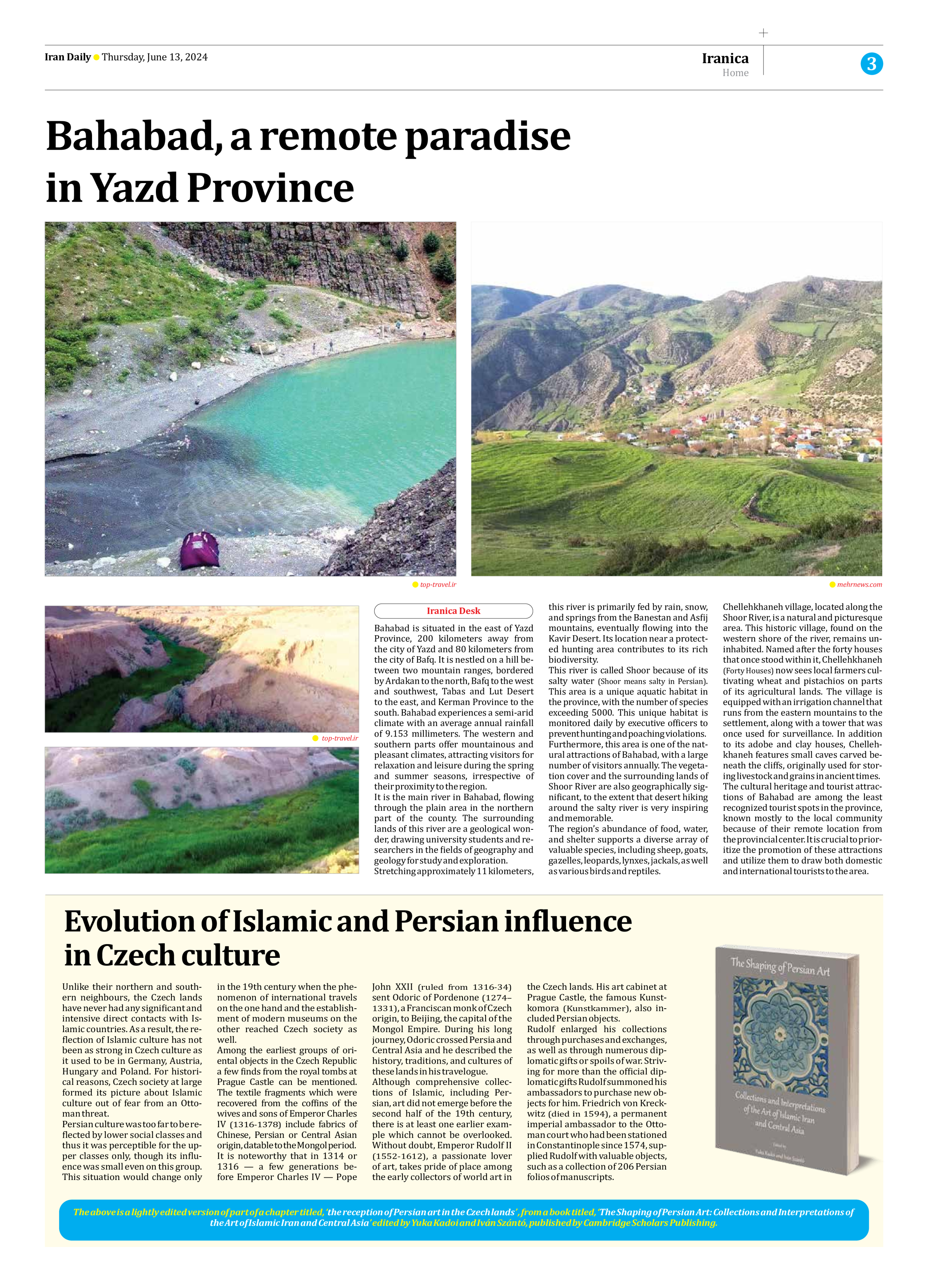
Copy in clipboard...
Evolution of Islamic and Persian influence in Czech culture
Persian culture was too far to be reflected by lower social classes and thus it was perceptible for the upper classes only, though its influence was small even on this group. This situation would change only in the 19th century when the phenomenon of international travels on the one hand and the establishment of modern museums on the other reached Czech society as well.
Among the earliest groups of oriental objects in the Czech Republic a few finds from the royal tombs at Prague Castle can be mentioned. The textile fragments which were recovered from the coffins of the wives and sons of Emperor Charles IV (1316-1378) include fabrics of Chinese, Persian or Central Asian origin, datable to the Mongol period.
It is noteworthy that in 1314 or 1316 — a few generations before Emperor Charles IV — Pope John XXII (ruled from 1316-34) sent Odoric of Pordenone (1274–1331), a Franciscan monk of Czech origin, to Beijing, the capital of the Mongol Empire. During his long journey, Odoric crossed Persia and Central Asia and he described the history, traditions, and cultures of these lands in his travelogue.
Although comprehensive collections of Islamic, including Persian, art did not emerge before the second half of the 19th century, there is at least one earlier example which cannot be overlooked. Without doubt, Emperor Rudolf II (1552-1612), a passionate lover of art, takes pride of place among the early collectors of world art in the Czech lands. His art cabinet at Prague Castle, the famous Kunstkomora (Kunstkammer), also included Persian objects.
Rudolf enlarged his collections through purchases and exchanges, as well as through numerous diplomatic gifts or spoils of war. Striving for more than the official diplomatic gifts Rudolf summoned his ambassadors to purchase new objects for him. Friedrich von Kreckwitz (died in 1594), a permanent imperial ambassador to the Ottoman court who had been stationed in Constantinople since 1574, supplied Rudolf with valuable objects, such as a collection of 206 Persian folios of manuscripts.







